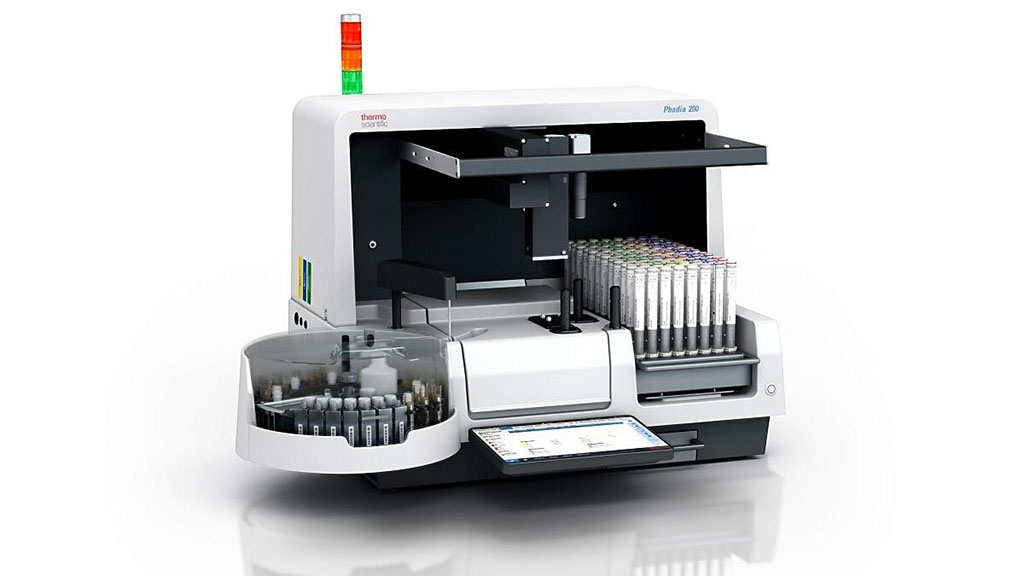Circulating Calprotectin as Biomarker in Neutrophil-Related Inflammation
By LabMedica International staff writers
Posted on 15 Apr 2021
Calprotectin (CLP) acts as an endogenous ligand of different cell-surface proteins like Toll-like receptor 4 and receptor of advanced glycation end-products facilitating a local proinflammatory effect. CLP is mostly secreted through an active, calcium-dependent Protein Kinase C (PKC) pathway, next to the passive leakage from necrotic cells and release in neutrophil extracellular traps (NET). Posted on 15 Apr 2021
Since CLP is released at the local site of inflammation, CLP plasma levels have been suggested to be a biomarker that reflects local disease activity in inflammatory diseases, in contrast to conventional acute-phase proteins such as C-reactive protein (CRP), which are mainly produced by hepatocytes after non-specific, systemic inflammatory activity. In addition to mirroring local inflammation processes, CLP is relatively stable and easily measurable in blood.

Image: The Phadia 200 instrument is small enough to fit on a benchtop, and yet capable of running the complete menu of more than 700 different ImmunoCAP and EliA tests to aid in the diagnosis of allergy and autoimmune diseases (Photo courtesy of Thermo Fisher Scientific)
Biomedical Scientists at the Onze-Lieve-Vrouw Hospital (OLV, Aalst, Belgium) and their colleagues established reference values for 100 healthy volunteers (median age [range] = 42 years [21–64]; 58% female). At time of sampling, all healthy volunteers had no physical complaints and had CRP levels of less than 5.0 mg/L. To evaluate pre-analytical conditions, four rheumatoid arthritis (RA) patients (age = 60 years [56–73]; 50% female) with active disease, median CRP 14.2 mg/L (range = 2.7–73.3 mg/L)] were included.
Circulating CLP was measured in serum and plasma with the EliA Calprotectin 2 assay, a sandwich-principle-based fluoro-enzyme-immunoassay (FEIA) on the Phadia 200 instrument (serum/plasma protocol, Thermo Fisher Scientific, Freiburg, Germany), which uses monoclonal mouse anti-calprotectin antibodies highly specific for calprotectin’s heterodimeric complexes. Different sample types were investigated: serum with/without gel separator, heparin, EDTA and citrate plasma, pre-centrifugation time (<2 hours, 6 hours, 24 hours), storage condition (2–8 °C, 18–25 °C, 30 °C) and storage time (24 hours, 72 hours, 7 days).
The investigators reported that in healthy controls, baseline CLP concentrations in serum were more than double the concentration in EDTA and citrate plasma (0.909 µg/mL versus 0.259 µg/mL and 0.261 µg/mL respectively). Heparin, EDTA and citrate stabilized CLP concentrations for up to 6 hours before centrifugation, whereas significant increases in CLP levels were observed when serum was left untreated during that time period.
The authors concluded that their data revealed that in both healthy controls and RA patients serum CLP levels are considerably higher in serum than in plasma. The establishment of reference values in healthy controls showed that 95% upper limits were both sample type- and CRP-dependent. Serum tubes need to be centrifuged within two hours and plasma tubes within six hours after blood collection. All investigated sample types can be stored refrigerated (2–8 °C) for up to seven days, at room temperature (18–25 °C) for up to 24 hours, frozen (−20 °C) for up to three months and can have five freeze-thaw cycles without a relevant change in CLP concentration. The study was published on March 6, 2021 in the journal Clinica Chimica Acta.
Related Links:
OLV Hospital
Phadia














